The Hebrew word for Jewish immigration to Israel is aliyah which literally means “going up.” This does not refer to the topography of Israel compared to other lands but, rather, to the spiritual elevation which one receives through moving to the Holy Land.
There has been a continued Jewish presence in the Holy Land for thousands of years – since before Christianity and Islam came into being.
But, in 70 CE most of the Jews were exiled from their homeland by the Roman Empire. Scattered and constantly wandering around the world, Jews always held on to the dream of returning to what the Romans called “Palestine” and the Jews knew as “the Land of Israel.” Ever since, on the Day of Atonement and on Passover Jews have fervently declared “Next year in Jerusalem!”
Join the fight for Israel’s fair coverage in the news
The Earliest Religious Aliyah
While individuals and small groups tried to make their way back to the Land of Israel throughout the millennia, the first significant “Aliyah” took place in the late 17th century. In 1697, Rabbi Judah HaHassid, a rabbi in Poland, left for the Land of Israel with 31 families from among his followers. They spent a year traveling through Germany and Moravia trying to inspire others to join them . By the time they arrived in Italy, the group numbered 1,500 people. Close to one-third died along the way but after finally arriving in the Land of Israel on October 14, 1700, they made their homes in Jerusalem.
The next large group moved to the Holy Land between 1740 and 1750 when thousands of religious Jews moved including two of the greatest rabbis of the time – Rabbi Moshe Chaim Luzatto from Italy and Rabbi Chaim Ben Attar, also known as the Or Hachaim, from Morocco.
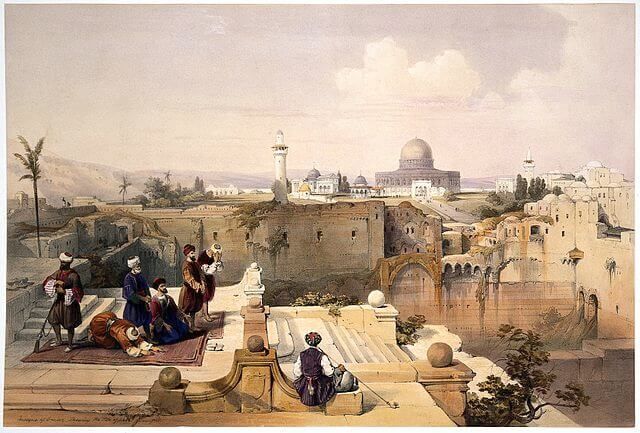
They were followed in the last decades of the 18th century by hundreds of students of the founder of the Hassidic movement , the Baal Shem Tov. These Hassidim who were from present-day Ukraine, did not seek to build a state. Rather, they saw themselves as the spiritual emissaries of the Jewish people around the world and focused on religious study and prayer.
The next large group in this religious Aliyah were the students of Rabbi Eliyahu of Vilna (the Vilna Gaon) who arrived in the land in the hundreds during the first decade of the 19th century. While this group also focused on spirituality, they also purchased land for farming. They viewed the reflourishing of the land through the lens of Biblical prophecies and the coming of the Messiah.
Five Waves of Modern Aliyah
A rash of pogroms in Russia and rising antisemitism throughout Europe led to five distinct waves of aliyah between 1882 and 1939. These influxes were much larger than the previous religious aliyah.
The First Aliyah (1882-1903): The immigrants of this period worked toward the establishment of a Jewish state in the Holy Land. 60,000 members of two movements – Chibat Zion which had more of a religious perspective and Bilu with more of a focus on the agricultural – made the move to the Holy Land.
The immigrants of the First Aliyah established new settlements which became cities – such as Rishon Letzion, Rechovot, Hadera, Gedera, and others – by purchasing 90,000 acres of land from Arabs. They also made their homes in cities such as Jaffa where 3,000 of these new immigrants moved. This wave of aliyah was most responsible for the revival of Hebrew as a spoken language and Hebrew schools were established.
Related reading: Jewish Roots: Building the Land of Israel
The Second Aliyah (1904-1914): This was characterized by younger, secular Russian immigrants with socialist ideals. They sought to create a workers’ commonwealth in pre-State Israel and worked as laborers. This group, which numbered around 40,000, established the first kibbutzim.
This group also began the process of building a Jewish army with their Hashomer defense association. David Ben Gurion, Yitzchak Ben Zvi, and other idealistic future leaders of the State were part of this Aliyah.
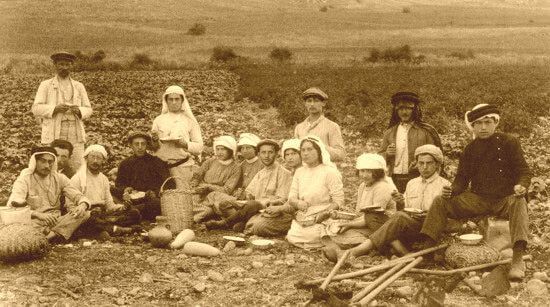
The Third Aliyah (1919-1923): Immigration to the Land of Israel paused during World War I but it picked up in 1919. Spurred by the 1917 Balfour Declaration, 35,000 Jews with a stronger Zionist spirit made their way from Russia, Poland and Lithuania, along with another 1,000 from other European countries. The mostly younger pioneers from this Aliyah founded the Histadrut, the countrywide labor organization, and provided workers for construction of housing and roads.
The Fourth Aliyah (1924) saw the arrival of new types of immigrants: middle-class shopkeepers and artisans, mostly from Poland, who fled harsh economic restrictions. The 67,000 Jews of the Fourth Aliyah settled in cities like Tel Aviv and started factories, stores, restaurants and small hotels.
The Fifth Aliyah (1929-1939) brought more than 250,000 Jews to pre-State Israel and was the first large influx of Central and Western European Jews. Many were highly trained professionals including doctors and other academic professions, and musicians and other cultural skills. They settled in cities such as Tel Aviv, Haifa, and Jerusalem.
This Fifth Aliyah coincided with the clandestine efforts to bring Jews to the Holy Land, also known as “Aliyah Bet.” In 1934 the HeHalutz movement chartered a Greek ship, the “Vellos,” to bring 350 “illegal” immigrants as the British tried to cut down on Jewish immigration to the Holy Land. Between 1937 and 1939 thousands more came on ships organized by Betar and Revisionist groups. After the Holocaust these efforts continued in defiance of British restrictions on Jewish immigration. Between 1934-1948, 115,000 Jews reached what is now Israel. 51,000 were incarcerated by the British and were only freed to enter the land when the Jewish state was founded in 1948.
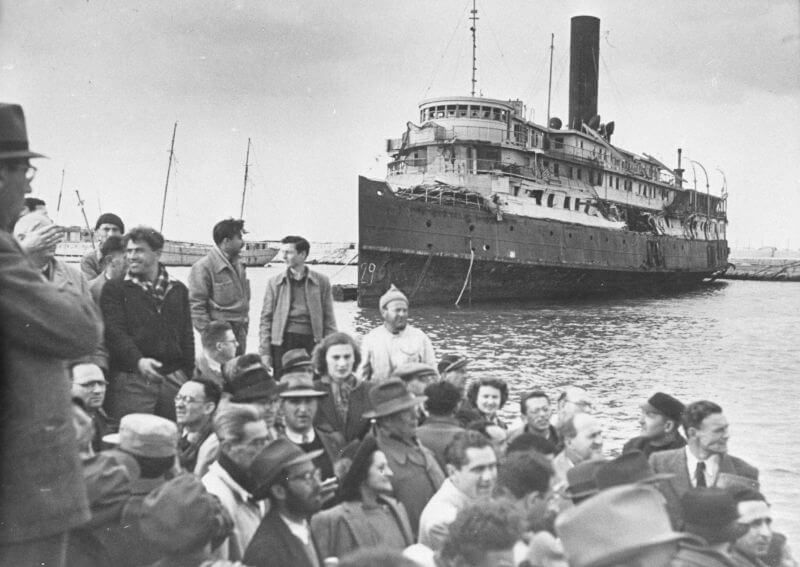
Ingathering
In keeping with its mission of being the Jewish national homeland, Israel enacted the Law of Return to make it possible for Jews to “come home” as easily as possible. Since its founding, Israel absorbed Jewish immigrants in three other waves. These three influxes came from different corners of the world and carried distinct challenges.
Related reading: What is Israel’s Law of Return?
Mizrahi Aliyah: Israel’s Jewish population skyrocketed with the immigration of 820,000 Jews from Arab countries beginning in 1948. Jewish refugees from Arab lands were forced to flee their homes in the face of antisemitic pogroms, repression and discrimination.
The first influx of 256,000 came from Iraq, Yemen, Libya, and Turkey between 1948-1951. The Jews of Iraq and Yemen were airlifted to Israel in Operations Ezra and Nehemia, and Operation Magic Carpet respectively. Tens of thousands made aliyah from Egypt and Morocco in the mid-1950’s and hundreds of thousands moved to Israel from other North African countries in the 1960’s.
Most of these immigrants were temporarily settled in immigration camps, and were then transferred to Ma’abarot – transit camps made of tin dwellings. These immigrants tended to be more religiously traditional than the founders of the state and they eventually moved to establish their own neighborhoods in Israel’s development towns in the northern and southern peripheries.
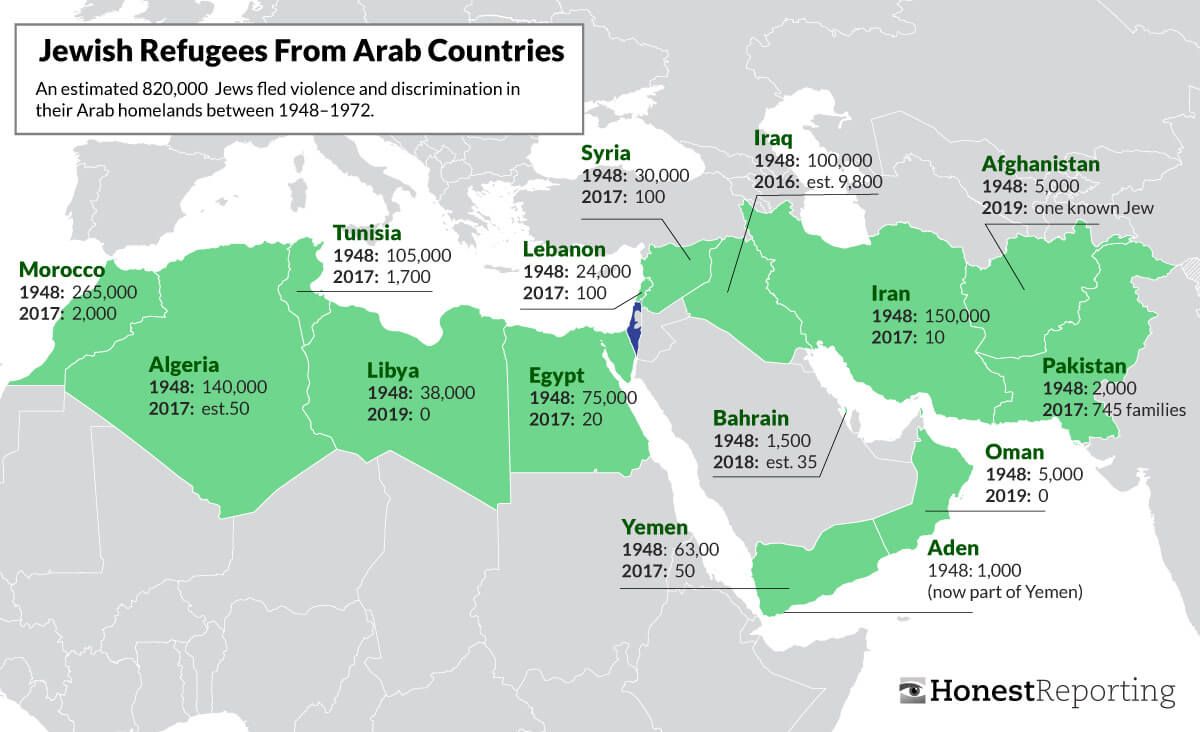
Related reading: The Forgotten Jewish Refugees From Arab Lands
Russian Aliyah: While there was a continuous flow of Jews to Israel from all around the world in the 1970’s and 80’s, the next large influx of immigrants came in the 1990’s as the Soviet Union crumbled. When the Jews at the beginning of this wave had to first fly to transit points in Europe, Israel made every El Al plane available to fly them home. Close to one million made aliyah and Israel set up 430 caravan sites to temporarily house them.
This Russian aliyah contributed greatly to Israel as 60% of these immigrants were college educated – twice the number of college educated Israelis as the time. They included 57,000 engineers compared to 30,000 that were in Israel then, and 12,000 doctors while all of Israel had just 15,000 doctors.
The Russians struggled to integrate into Israeli society, tending to live in their own neighborhoods. In addition, Russian academic degrees were often not recognized, forcing the immigrants to work in jobs that did not match their expertise. But by 2012 their average salary that of native born-Israeli Jews and their children integrated as full-fledged Israelis.
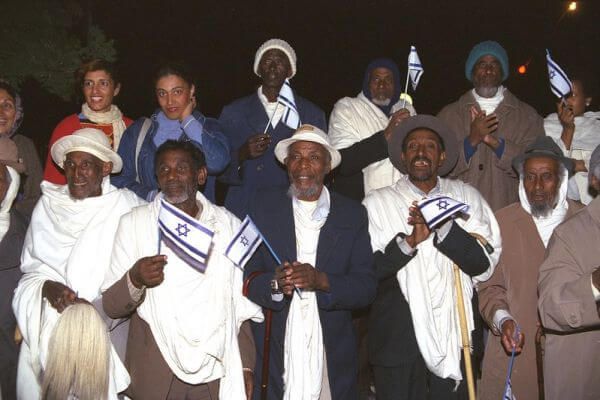
Ethiopian Aliyah: In 1984, about 7,000 Ethiopian Jews were airlifted to Israel in Operation Moses after walking across a Sudanese desert to reach a clandestine airfield. An additional 500 were flown to Israel by the United States in Operation Joshua. And then in 1991 Israel launched Operation Solomon – sending 34 planes, many with their seats removed to increase their capacity, to bring 14,000 Ethiopian Jews to Israel over the course of 36 hours.
Today approximately 140,000 Jews from Ethiopian descent live in Israel. The integration of this population which was not accustomed to a Western style society has been a particular challenge for Israel. The Ethiopian community has unfortunately faced racism and discrimination. Moreover, some 8,000 Ethiopians who are sometimes known as Falash Mura or Beta Israel who have close relatives in Israel also seek to immigrate but the Interior Ministry does not recognize their Jewishness.
But progress is reflected in the new generation of Ethiopian Israelis. Descendants of the immigrants are entering higher education in large numbers, and have reached high levels of the IDF, politics, culture and media.
* * *
With nearly six million Jews living in countries throughout the world, Aliyah continues. The first decade of the 21st century saw more than 250,000 new immigrants from 150 countries. The highest numbers came from Russia (66,800), Ukraine (45,670), France (38,000) and the United States (32,000).
Israel is known as a country of immigrants. The story of Aliyah over the last 300 years in addition to those Jews who never left Israel, makes up the wide spectrum of cultures, traditions, customs, and accents which give Israel its unique society.
Liked this article? Follow HonestReporting on Twitter, Facebook, Instagram and TikTok to see even more posts and videos debunking news bias and smears, as well as other content explaining what’s really going on in Israel and the region.
New! Skip the social scroll and get the latest from HonestReporting via Telegram.
Image: Jerusalem via Wikimedia Commons; Migdal via Wikimedia Commons; Exodus via Wikimedia Commons; Ethiopian aliyah CC BY-NC-SA Government Press Office;

